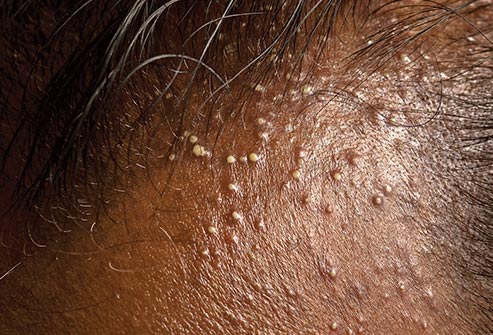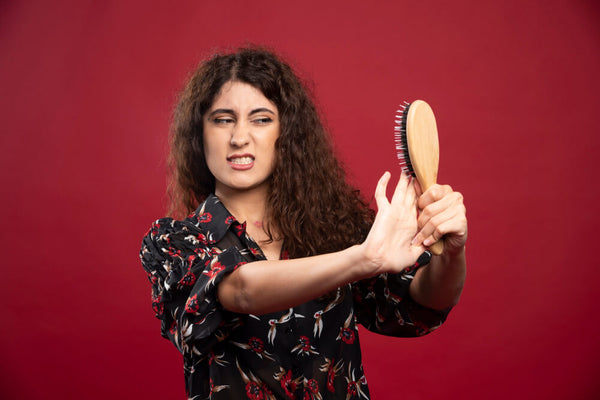What Is Scalp Folliculitis?
Scalp Folliculitis is a hair condition where the scalp’s hair follicles are infected. At its onset, it could appear like whitehead pimples or small red bumps around each hair root.
Once the red bump turns into a hard crust, it can cause you severe discomfort due to pain and itchiness.
There are two types of Scalp Folliculitis;
- The Superficial Scalp Folliculitis affects only the upper part of hair follicles
- The Deep Scalp Folliculitis causes the inflammation to go deeper into the hair follicles
Severe cases of Scalp Folliculitis end up causing hair loss and scarring of the hair follicles.
Typically, Folliculitis is an internal issue, so for its reversal, an internal approach is the way to go.
What Causes Scalp Folliculitis?
While the exact causes of Scalp Folliculitis haven’t been discovered yet, experts believe it's triggered due to microbial infection. This infection is usually caused by:
- Bacteria
- Yeast or Fungi
- Mites
- Viruses
But other factors cause scalp skin irritation and increase the possibilities of hair follicle infection.
These external factors that could increase the risk of Scalp Folliculitis are:
- Excessive use of hair cosmetics like hair oils, styling products, shampoos, etc. can irritate the scalp and cause inflammation.
- Using public swimming pools or sharing other unclean personal items
- Open injuries like cuts or bruises on the scalp that could get infected and spread to hair follicles
- Illnesses that weaken the body’s immune system e.g. Cancer or HIV infection

What Are Its Symptoms?
In mild cases, Scalp Folliculitis acts as a superficial infection that only infects and inflames the upper portion of hair follicles.
But in severe cases, the infection goes way deeper into the hair follicle and causes hair loss. Common symptoms of Scalp Folliculitis include:
- An outbreak of red bumps [that look like pimples] near the hair roots
- Pus-filled blisters around hair follicles
- Constant itchiness of the scalp skin
- Hair loss [when it gets severe]
- Crust formation on the red pustules
- Painful clusters of small red bumps on the scalp
- Receding hairline [especially when the pustules form along the hairline]
- Abscesses from rupturing pustules [when it gets severe]

So, What You Can Do About Scalp Folliculitis?
Here at Nina Ross Hair Therapy, this is how we help you deal with Scalp Folliculitis:
- You’ll need to have a scalp scope done to check your follicular status and scalp health.
- Since Scalp Folliculitis is a bacterial infection, the most effective treatment approach is to use anti-bacterial healing agents in treating the inflamed hair follicles.
- To soothe the discomforts of inflammation, our exclusive formula of anti-bacterial herbs and oil extracts would help.
- Heat application via compress and steam therapy helps to reduce pain, discomfort, and itching.
- In very severe cases where the infection has spread deep under the hair cuticle, you’ll need to see a partner dermatologist for medical prescriptions.
Talk to us, let’s help you get over the distress of Scalp Folliculitis and go back to loving your hair.















